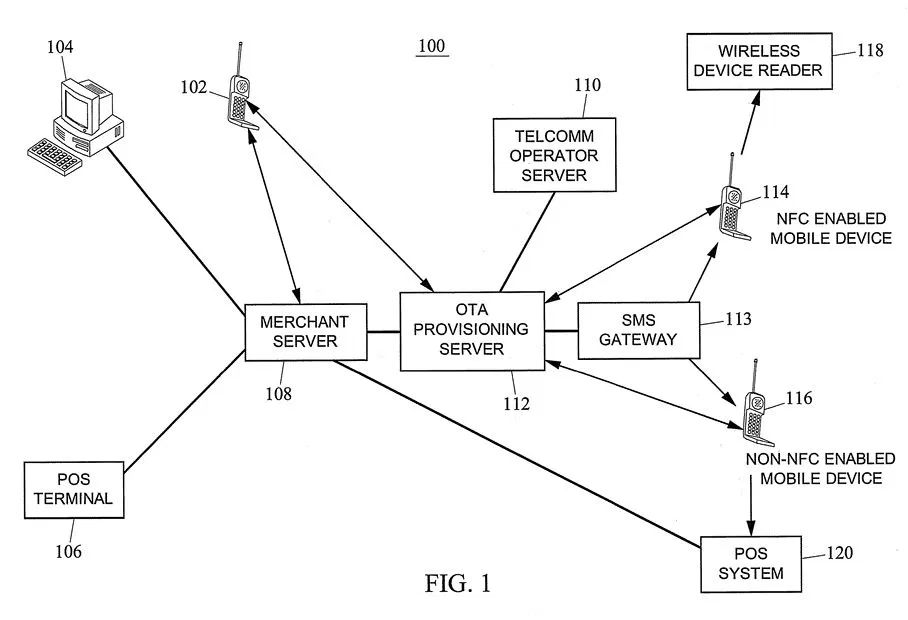This decision concerns a method and system of sending a prepaid gift card to other users. Although the Board indicated that the invention had a business aspect, the specific implementation of the solution was technical and inventive. Here are the practical takeaways from the decision T2040/14 (Providing prepaid gift cards to devices with or without NFC capability/ MasterCard International Incorporated) of February 12, 2021, of Technical Board of Appeal 3.5.01:
Key takeaways
A delivered card is requested by one user for the benefit of another user, is a business aspect which is according to the COMVIK approach given to the skilled person as a non-technical requirement specification within the framework of the above objective technical problem.
Implementing a dual provisioning process on a user's mobile phone is a technical problem.
Querying a dedicated server to determine whether a mobile device is NFC enabled and providing a prepaid gift card to devices with or without NFC capabilities is technical.
The invention
The European patent application concerns a method to enable users to purchase and send prepaid gift cards to other users. Depending on the recipient's mobile phone, the gift card is either sent as a digital gift card (automatic wireless payments over an NFC connection) or as a physical card.
This determination is made by an over-the-air server (OTA) server, which queries the telecommunications operations server if the recipient's mobile phone number is NFC enabled or otherwise. If the mobile phone is NFC enabled, the OTA provisioning server establishes a secure connection with the recipients' phone and provides a soft card that can be used by an NFC connection. If the recipient's mobile phone is not NFC enabled, the OTA server generates and sends the recipient an SMS including a card authorisation code which can be used to obtain a physical gift card from a physical store.

Fig. 1 of WO2010019670A2
Here is how the invention was defined in claim 1:
Claim 1 (main request)
A method for electronically delivering a prepaid card to a mobile device (114,116), the method comprising:
receiving, at a merchant server (108) from a sender device (102, 104, 106), purchase information related to the purchase of an electronic prepaid card, wherein the purchase information includes recipient information associated with a mobile device (114, 116) intended to receive the electronic prepaid card;
receiving, at an over the air (OTA) provisioning server (112) and from the merchant server (108), a provisioning request including electronic prepaid card information derived from the purchase information;
requesting, at the OTA provisioning server (112) and from a telecommunications operations server (110), the type of mobile device (114, 116) associated with the recipients mobile device number;
determining, using the mobile device type information provided by the telecommunications operations server (110), whether the mobile device (114, 116) is near field communications (NFC) enabled;
in response to determining that the mobile device (114,116) is NFC enabled:
establishing a communications link with a mobile device (114) associated with address data included in the electronic prepaid card information; and provisioning the electronic prepaid card information on the mobile device (114) over the communications link via OTA communications, wherein the electronic prepaid card information includes personalization data that is used to generate a softcard prepaid card in the NFC enabled mobile device (114) and is transferrable from the mobile device (114) to a wireless device reader (118) via NFC; and
in response to determining that the mobile device (114,116) is not NFC enabled:
sending a prepaid card authorization code associated with the electronic prepaid card to a short message service (SMS) gateway (113); and sending the prepaid card authorization code from the SMS gateway (113) to the non-NFC enabled mobile device (116)
Is it patentable?
Both the Examining Division and the Board considered document D2 (US-A-2008/0058014) as the closest prior art, which discloses a system for providing soft cards to mobile devices enabling wireless payments over an NFC connection.
The first instance Examining division considered that the technical aspects of using SMS technology were commonplace. The remaining differences, in particular the use of a separate sender device, were considered to be obvious implementations of business-driven non-technical aspects.
However, the Board did not agree with the assessment of the Examining Division and the assessment of :
3.4 In appeal, the Board considered that using separate sender and recipient devices was not just an incidental feature, but an essential feature of the invention which should be considered when determining the starting point for inventive step. Thus the Board preferred to start from the embodiment in D2 relating to WAP push provisioning of prepaid cards which deploys separate sender and recipient devices.
The Board then summarised the distinguishing features as i/ii) a merchant server, iii) a telecommunications server determining whether the recipient's device is NFC enabled, iv). the provisioning over the communication link is in response to determining that the device is NFC enabled and v/vii/viii). sending a card authorisation via SMS if the device is not NFC enabled.
With these as the distinguishing features, the Board then separated the business aspects from the technical features as follows:
3.5 The Board judges that the background to this invention, namely that a delivered card is requested by one user for the benefit of another user, is a business aspect which is according to the COMVIK approach given to the skilled person as a non-technical requirement specification within the framework of the above objective technical problem.
It is probably also true that recognising that providing prepaid soft card personalisation data to mobile phones that can use it and providing authorisation codes to ones that cannot is also a non-technical aspect. This is in effect the situation in T 1503/12; granny would not send her grandson a Ybox game for his Xbox console – see points 4.6 and 4.7.
Thus, the technical problem is to implement the dual provisioning process on a user's mobile phone.
Starting from document D2, the Board agreed with the applicant that the solution was not obvious:
3.7 It might well be obvious to check whether a mobile phone is NFC enabled in order to decide whether the soft card personalisation data or the card authorisation code should be provided.
However, the Board agrees with the appellant that the obvious solution would be to obtain this information from the provisioning and payment application which, if not already present, would need to be installed on the mobile phone. In fact, using this application for provisioning card data is the key aspect of D2's teaching ([11] and [23]).
3.8 The Board also agrees with the appellant that while D2 discloses a provisioning configuration server, storing configuration information for multiple card issuers ([26]), and implicitly that the push proxy gateway is used (see D12, points 5 and 6), there is no hint to adapt any of these servers to provide upon request information on whether a mobile phone is NFC enabled.
D2 discloses that the provisioning and payment application communicates with the provisioning configuration server to verify whether the mobile phone is authorised for obtaining soft card data ([42]). The Board agrees, however, with the appellant's reading of D2 and accepts that this step does not involve obtaining from the server information on the phone's hardware capabilities; the only information obtained is an indication that the phone was authorised for receiving soft card data.
Also, the general teaching in D12 that the push proxy gateway may be queried for capabilities of WAP clients (sections 6.6. and 7.2.6), is not a strong enough hint to obtain from the push gateway specific information concerning the phone's NFC capability.
Finally, the Board decided that using SMS to provide the code was teaching away from document D2, and thus also not obvious:
3.9 As for providing the card authorisation code in an SMS, the Board judges that the skilled person would rather provide the code using the provisioning and payment application installed on the mobile phone in the NFC capability determination stage.
The Board considers that providing sensitive card data in an SMS instead of downloading it securely using the provisioning and payment application runs against the key teaching of D2 and the skilled person would not do it without a hint in prior art. However, D2 does not give such a hint and actually teaches away from the claimed solution. Paragraph [23] states that the provisioning and payment application's payment functionality is actually not essential for the disclosed subject-matter which rather relates to its provisioning functionality. The skilled person would derive from this that the authorisation code should be downloaded using the provisioning and payment application, even if it cannot be used for wireless payments.
Therefore, the subject-matter was considered inventive and the case remitted to the first instance with an order to grant the patent based on the claims of the main request.
The content of this article is intended to provide a general guide to the subject matter. Specialist advice should be sought about your specific circumstances.

